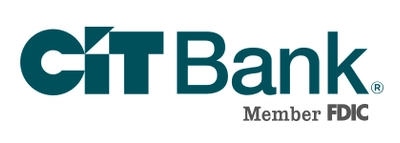How Much Can CDs Earn: A certificate of deposit (CD) serves as a savings account where depositors receive a fixed interest rate for a predetermined period. While early withdrawal incurs penalties, banks typically offer higher interest rates on CDs compared to traditional savings accounts, presenting an opportunity for increased earnings.
As of September 18, 2023, the Federal Deposit Insurance Corporation (FDIC) reports an average interest rate of 1.76% for 12-month CDs, more than double the average rate of 0.45% for savings accounts. Notably, the top CD rates often surpass 5% APR. Below, we delve into the mechanics of CD accounts and explore the potential earnings from CD investments.
Why should I consider CDs?
Certificates of Deposit (CDs) offer several significant advantages, providing an avenue for saving money at enhanced interest rates while safeguarding against potential losses. With predictable returns and minimal risk, CDs present an appealing option for individuals seeking to earn interest rates higher than those typically offered by savings accounts, without exposing their funds to market volatility.
CDs boast exceptional safety, backed by government insurance up to FDIC coverage limits, presently set at $250,000 per depositor per institution, or up to $500,000 for joint accounts. This safeguard ensures that even in the event of a bank failure, depositors are guaranteed to recover their funds within these limits.
While CDs may be less appealing in an environment of rising interest rates, as depositors risk locking in rates below market averages, they shine when rates are stable or declining. In such scenarios, depositors can secure their funds at a fixed rate, potentially surpassing the rates available for new CDs.
click here – Are CDs Taxable?
3 elements of CDs that can affect returns
If early withdrawal is avoided, CD returns are essentially guaranteed. There are three primary factors that impact your CD returns:
Interest rate
The interest rate stands as the primary factor determining your earnings. Comparing CDs, savings accounts, and other investments can be done using the annual percentage yield (APY). Despite variations in compounding schedules, bonuses, and other incentives among banks, APY offers a straightforward comparison of how much you would earn over a year under the account’s existing terms.
Duration
The duration of your savings impacts rates in two significant ways. Firstly, the longer you maintain a CD, the more you stand to earn. Naturally, with the same interest rate, your overall return is higher over six months compared to three months. Banks frequently offer higher rates if you commit your funds for a longer period. Exploring different options can assist you in discovering the most favorable deal for various durations.
Early withdrawal penalties
Many CDs impose an early withdrawal penalty should you require your funds before the maturity date. Early withdrawals can incur significant costs, typically resulting in the forfeiture of a certain number of months’ worth of interest at your CD’s interest rate. In some cases, if you’ve held the CD for only a short period, the penalty might exceed the interest you’ve earned.
Calculating your CD returns
How to calculate CD interest
Calculating CD interest can be straightforward with the right formula. Here’s how to calculate your earnings:
Interest Earned = Initial Deposit × (1 + APY / Compounding Periods Per Year)^(Compounding Periods Per Year × Number of Years) – Initial Deposit
While this formula can be complex, using a CD interest calculator may offer a simpler solution.
What are the best CD rates?
CD rates are subject to change and often fluctuate in response to shifts in the Federal Reserve’s target interest rate. As of Sept. 18, 2023, average CD rates stand at 0.21% for one-month CDs, 1.37% for three-month CDs, 1.36% for six-month CDs, 1.76% for 12-month CDs, 1.51% for 24-month CDs, 1.38% for 36-month CDs, 1.31% for 48-month CDs, and 1.38% for 60-month CDs.
However, a search conducted on Sept. 20, 2023, revealed even more enticing rates. For instance, 12-month CDs with APYs as high as 5.50%, 36-month CDs with APYs reaching 4.75%, and 60-month CDs offering rates up to 4.65% were found. Given this variability, it’s essential to explore different options to identify CDs with the most favorable rates and terms.
click here – Are CDs Worth It?
How much can you earn by investing in a $2,500 CD?
Let’s examine the potential earnings from investing $2,500 in a CD at the prevailing average interest rates for different maturity terms.
| Term | APY* | Deposit | Total value earned | Where to find this rate |
|---|---|---|---|---|
| Three months | 2.00% | $2,500 | $12 | Discover® Bank |
| Six months | 5.05% | $2,500 | $62 | Quontic |
| 12 months | 5.30% | $2,500 | $132 | Quontic |
| 18 months | 4.60% | $2,500 | $190 | Discover® Bank |
| Two years | 4.50% | $2,500 | $230 | Quontic |
| Three years | 4.40% | $2,500 | $345 | Quontic |
| Four years | 3.90% | $2,500 | $425 | Discover®Bank |
| Five years | 4.30% | $2,500 | $586 | Quontic |
As of January 24, 2024, the rates are accurate. However, rates are subject to change without prior notice. Please refer to the bank’s website for the most up-to-date rates.
How to have CDs and flexibility
Some CDs offer more flexibility compared to others, with features such as early withdrawal options and no-penalty clauses.
Take, for instance, CIT Bank’s 11-month No-Penalty CD, which allows you to withdraw funds before maturity without incurring any penalties or additional fees.
click here – Chase Freedom Unlimited: Double Your Cash Back With An Extra 1.5% for Your First 12 Months

CIT Bank CD No Penalty
Min. deposit: $1,000
Monthly fee: $0
Term:11 months
In the past, CIT Bank provided the Ramp-Up CD option, enabling customers to opt for a higher interest rate if the bank’s rates rose. However, as of August 2023, this product was not available for new accounts.
Alternatives to CDs as safe investments
If you desire the security of a CD but with more flexibility, explore these alternatives to traditional CDs:
High-yield savings account (HYSA)
A high-yield savings account (HYSA) offers interest rates higher than traditional savings accounts. Typically provided by online banks, some HYSAs yield returns comparable to CDs without early withdrawal penalties. However, unlike CDs, the interest rate on HYSAs is not guaranteed for a fixed term and may fluctuate if interest rates decrease.
Money market account (MMA)
Money market accounts (MMAs) combine features of both savings and checking accounts, offering the convenience of check-writing alongside competitive interest rates. MMAs often provide higher interest rates compared to traditional savings accounts and may even exceed those of CDs in some instances. However, similar to high-yield savings accounts, the interest rates on MMAs are subject to change and may vary over time.
Savings bonds
Savings bonds, offered directly by the United States government, provide a long-term investment option. They are obtainable through the United States Treasury’s website, TreasuryDirect, or can be received as part of your tax refund during annual tax filing.
With a minimum purchase of $25, savings bonds accrue interest for up to 30 years. Series EE bonds guarantee to double in value within 20 years, while I bonds offer inflation protection.
CDs are a safe and profitable investment if you don’t mind their illiquidity
CDs offer minimal risk and frequently yield interest rates higher than those of standard savings accounts. Although you must agree to keep your funds deposited for a specified duration, they can be a wise investment choice when you’re certain you won’t require immediate access to the funds and prefer to avoid potential losses.
click here – Best Small Business Credit Cards for February 2024

